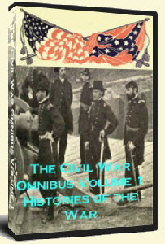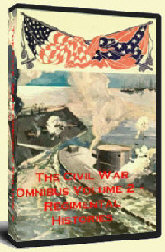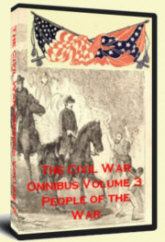The few remaining survivors of the struggle, Northern as well as Southern, will be repelled by the very subject of this book; probably the average reader will question the worth-whileness of an exhaustive study of that which seems to record a nation’s shame….Much is to be said in extenuation of the ugly phase of desertion, apparently inseparable from war, but to look it squarely in the face, rather than to cover it up or to ignore it, is to see more of the truth about war and should be another step in the direction of peace. Ella Lonn, 1928
In 1928, when the majority of those who had served in the civil war were dead, and very few lived who had clear memories of the war, a small book appeared, almost out of nowhere, that explored one of the few statistics about the civil war that was not part of the country’s collective history. The book was called “desertion during the civil war,” and the author, ella lonn, dared expose the plague of desertion during the conflict, a subject that had escaped historians and academia alike for over 50 years. Read the rest of this entry »
Comments Off on A Nation’s Shame – Desertion During the Civil War
By late 1864 the Confederacy had been strangled by General Ulysses S. Grant’s strategy of total war. The Confederate capitol of Richmond was cut off from most of the rest of the Confederacy, due to Grant’s capture of Vicksburg, Mississippi, Sherman’s capture of Atlanta and Savannah, and the occupations of other important cities such as Memphis and New Orleans by Union troops. Railroads had been destroyed. Telegraph lines torn down. The Confederacy was limping into its last days, supplied for the most part by the one town that the Union had thus far found impossible to take – Wilmington, North Carolina.
Wilmington, a port city on the Cape Fear inlet of the Atlantic, was an important trading center for the Confederacy. Southern cotton, tobacco, rice and other exports were traded to European ships, called blockade runners for their ability to get past Union blockades, for items that the Confederacy needed. After Norfolk, Virginia, fell into Union hands in 1862, and with Charleston, South Carolina continually besieged throughout the war, Wilmington became doubly essential to the Confederacy, as it then became the primary port of entry into the foundling nation. Read the rest of this entry »
Comments Off on Fort Fisher – the Last Major Stronghold of the Confederacy
May 25, 1861 was a tragic day for President Abraham Lincoln. Virginia had seceded the day before, making a full scale Civil War a certainty, troubling for Lincoln, who’d conceded to many of the mighty Virginia’s demands before the state decided to secede. Yet that was just the beginning. Before the day was gone, one of the Lincoln family’s closest friends, Colonel Elmer Ellsworth, would be dead, victim perhaps of his own arrogance. While the day was tragic for Lincoln, it made a martyr of Ellsworth, and the word “Zouave” would become a household word.
While the U.S. Army had a strong presence in the Civil War, many of the soldiers who served were not members of the army, but rather members of local militias who’d heeded Lincoln’s call for volunteers. These volunteer militias were usually outfitted by their hometowns, or, in the case of larger state militias, their home state. None of these local regiments cut a more dashing figure than the many Zouave regiments, which were found both in the North and South.
Inspired by French Zouave infantry regiments who served in North Africa, American Zouave regiments adopted the Zouaves’ distinctive – and very elaborate – uniform, which, although adapted with varying degrees by different regiments, typically consisted of short, closely-tailored jackets paired with wide-legged pantaloons known as chasseurs, and dependent on the regiment, adorned with a tasseled fez and/or turban, wide sash, and leather cuffs for the calves. Read the rest of this entry »
Comments Off on Colonel Elmer Ellsworth and the Zouave Regiments
During the Civil War era, New Orleans, with a population of nearly 170,000, was the largest city in the South, and one of the largest cities in the United States. New Orleans was also one of the wealthiest cities in the United States, and most of its income came from two particularly Southern sources – slave trading and cotton.
As a port city, New Orleans was very important to the Southern economy. In addition to slave trading and cotton, tobacco, sugar, and other Southern exports left for ports abroad from New Orleans, and European goods arrived for Southern consumption by way of New Orleans.
But New Orleans wasn’t just important to the South. The city was home to several Federal operations, including the New Orleans Mint, the U.S. Customs Office. And as soon as Louisiana seceded from the Union, the struggle to control this important city began. Read the rest of this entry »
Comments Off on Captured New Orleans
The assassination of President Abraham Lincoln in 1865 is one of the most infamous events in American history, one that undoubtedly changed the course of history as far as Reconstruction in the South is concerned.
Few realize, however, that the assassination that took Lincoln’s life was not the first attempt on his life; the first attempt to assassinate Lincoln was intended to prevent him from ever becoming president, and came shortly before he took office in 1861.
The election of Lincoln to the presidency had literally split the country in two. Despite the fact that Lincoln was much more moderate on the subject of slavery than the abolitionist candidates that had campaigned in the North, even the moderate Lincoln’s election to the presidency was seen as an affront to slavery’s supporters in the South, and almost as soon as the election was decided, what would become known as Secession Winter began as southern states, first South Carolina, seceded from the Union like falling dominoes. Read the rest of this entry »
Comments Off on The Almost-Assassination of Abraham Lincoln


